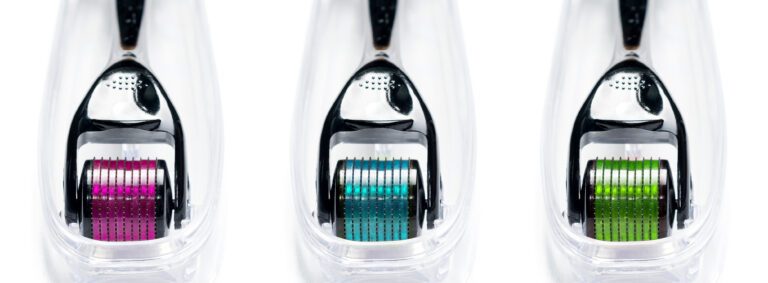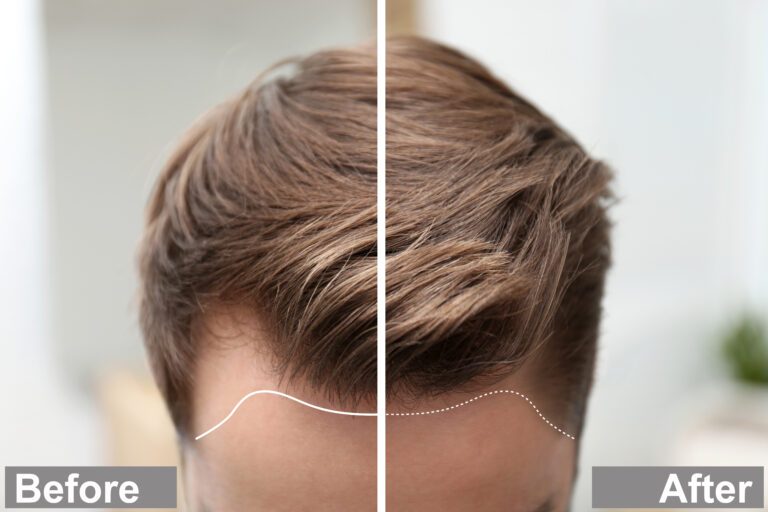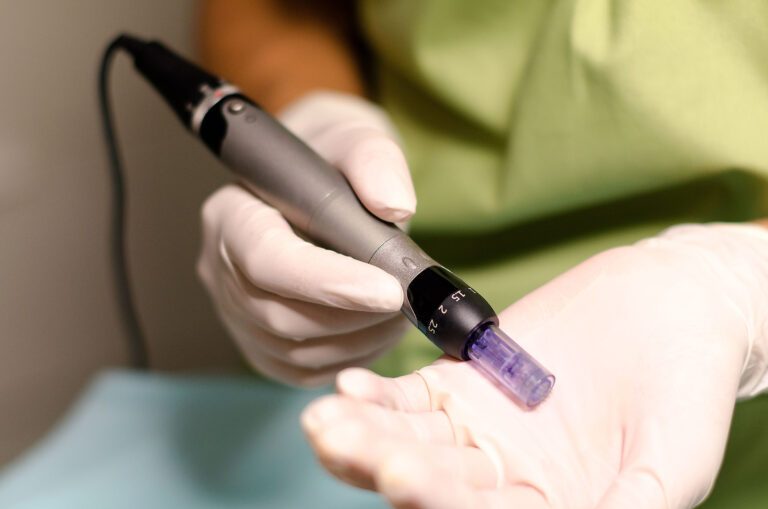Pros & Cons of a Hair Transplant: Know These Now
A full and healthy head of hair is something that we often take for granted—until we notice our diminishing strands. Hair loss is one of the most common dermatological issues that people face. Hormones, genetics, pregnancy, and aging are some of the causes of this condition.
Fortunately, multiple treatment options are available for hair loss sufferers, regardless of the reason behind their thinning hair. You can opt for medication, therapy, or surgery to address your balding scalp. Home remedies and lifestyle changes are an option as well.
In this guide, we’ll discuss one of the most popular hair restoration surgeries, which is hair transplantation. Keep on reading to learn significant hair transplant pros and cons, including the costs, effectiveness, and side effects of this procedure.
Pros of Hair Transplant
If you’re trying to decide whether to get this treatment or not, consider the following life-changing benefits and proven effectiveness of hair transplant:
1. Natural Looking Hair
A hair transplant typically involves a surgeon taking and preparing around 500–2,000 hair grafts from your scalp. Each hair graft contains one to two strands of your hair.
Since this is a personalized procedure, the type and amount of hair graft will depend on your specific hair quality, texture, and balding area. The surgeon strategically transfers these hair grafts according to your scalp’s natural hair pattern and distribution.
Because the process uses your own hair follicles, the transplanted hair will blend seamlessly with your existing hair. The new hair also grows naturally, making it difficult for even your barber or stylist to spot any irregularities.
2. Improved Aesthetics and Self Confidence
A successful hair transplant eliminates several signs of aging and provides a healthy, youthful, and rejuvenated look. Instead of constantly worrying about hair fall and your balding scalp, you’re able to look and feel like your best self.
In addition to your revamped aesthetics, a hair transplant can give you a massive confidence boost. You’ll gain the courage to try new hairstyles and head accessories like never before. This physical and mental enhancement can significantly improve your quality of life.
3. Safe and Effective
Most patients’ primary concern regarding hair transplants is the procedure’s overall safety. If you’re having the same thoughts, there’s no need to worry. Hair transplants are generally safe, with little to no chances of serious side effects or life-threatening complications.
Although it’s true that most operations involve risks, hair transplants are one of the safest surgeries being performed. Just make sure to consult a qualified, experienced, and board-certified surgeon specializing in the procedure. Report any unusual symptoms, too.
Additionally, you might be wondering—how effective are hair transplants, anyway? Well, the answer depends on your existing health conditions, hair characteristics, and the operative techniques used during surgery.
When performed by an expert medical professional using advanced technology, your procedure’s success rate can be as high as 100%. Studies also reveal that hair graft survival rates in standard hair transplant surgeries can reach 90–100%.
4. A Long-Lasting and Permanent Solution
The results of a hair transplant can last for a long time—around 20 years or more. According to the University of Pennsylvania Medicine, the new strands from the procedure develop at a normal pace and will continue to grow for life.
Patients’ personal observations of their own hair indicate visible, long-lasting results as well. What’s more, the new positioning of your transplanted hair follicles is permanent.
Old age may affect the hair production of these follicles, but this process is normally experienced by most people.
That said, hair transplants may be considered a permanent solution to the following conditions:
- Pattern baldness or androgenic alopecia
- Hormonal hair loss
- Hair loss from burns and injuries
- Hair loss from thyroid diseases
- Alopecia areata, an autoimmune disease affecting the hair follicles
5. Minimal Amount of Downtime
After the transplant, your scalp will typically experience tenderness as it starts to heal and recover. Your doctor might instruct you to wear scalp bandages and take pain medications, antibiotics, or anti-inflammatory drugs for the first few days.
However, most patients who’ve undergone this surgery can normally return to work after two to five days. You’ll only need to wait for at least one week before resuming your daily routine and activities. Remember to consult your doctor first before performing strenuous tasks.
6. Limited Pain and Scarring
During the procedure, your surgeon will inject local anesthesia to numb an area of your head. This process ensures that you’ll feel minimal pain during the entire session.
It’s possible to feel slight discomfort or tightness, but the experience is usually easy, tolerable, and even pleasant for most patients.
What’s more, a hair transplant surgery only takes four to eight hours, which means you won’t have to endure a relatively long process. Post-operative pain medications can alleviate any mild pain that you’ll feel after the procedure.
As for scarring, using the right tools and advanced methods of hair transplantation will result in limited and barely noticeable scars. Additionally, careful planning, combined with your surgeon’s skill, can significantly decrease the visibility of resulting scars.
Cons of Hair Transplant
Hair transplants have their own share of downsides and risks as well. Before undergoing this procedure, it’s best to consult your surgeon and be aware of the following disadvantages of hair transplant:
1. Minimally Invasive Procedure
Due to the development of advanced techniques and equipment, hair transplants aren’t as intensive as they used to be. However, patients who are sensitive to invasive procedures might want to think carefully before committing to this surgery.
There are two common methods of hair transplantation. Follicular Unit Strip Surgery (FUSS) involves the removal of a 6–10 inch skin strip from the back of the patient’s head. Meanwhile, in Follicular Unit Extraction (FUE), the surgeon removes the hair follicles one by one.
In both procedures, the surgeon will create individual slits where the hair grafts will be planted.
2. High Surgery Cost
Among all the pros and cons of hair transplant, anticipated costs can have the greatest impact on a patient’s decision. Depending on the number of hair grafts, your chosen facility, and your location, this surgery can cost from $4,000 to $15,000.
Unfortunately, most insurance plans don’t cover this treatment, since it’s classified as a cosmetic procedure. The price of medications can add to the total amount you’ll have to pay for this surgery as well.
3. Long Recovery Period
Patients usually take 8–10 months to completely recover from surgery. This is one of the major cons of hair transplant. The newly-transplanted hair follicles need a significant amount of time to heal, grow, and develop.
The lack of instantly visible results can be quite discouraging for some patients, and the recovery process can be challenging. During this time, strict obedience to your surgeon’s hair transplant aftercare instructions is a must.
4. Side Effects and Risk of Infection
Scalp tenderness, itching, and irritation are some possible unpleasant side effects of a hair transplant procedure. Some patients report the occurrence of bumps, swelling, or loss of implanted hair as well.
In some cases, patients with continued hair loss or unsuccessful results may have to undergo a second hair transplant. You’ll also need to be extra careful with your scalp hygiene and maintenance to prevent catching an infection.
Wrapping Up
Thoroughly considering all of the hair transplant pros and cons is the first step in deciding if this cosmetic procedure is right for you. Results can vary from patient to patient, so it’s important to go over your particular circumstances and weigh the risks and the rewards of this decision.
In addition to performing adequate research, don’t hesitate to get in touch with a qualified surgeon to air out your concerns. Selecting an experienced hair transplant surgeon and a suitable facility is vital to achieving a smooth, safe, and successful surgery, after all.
Lastly, don’t forget that there’s more than one path to hair restoration. Aside from hair transplants, specially formulated shampoos, medications, laser therapies, and other less invasive procedures can help you regain your crowning glory.







